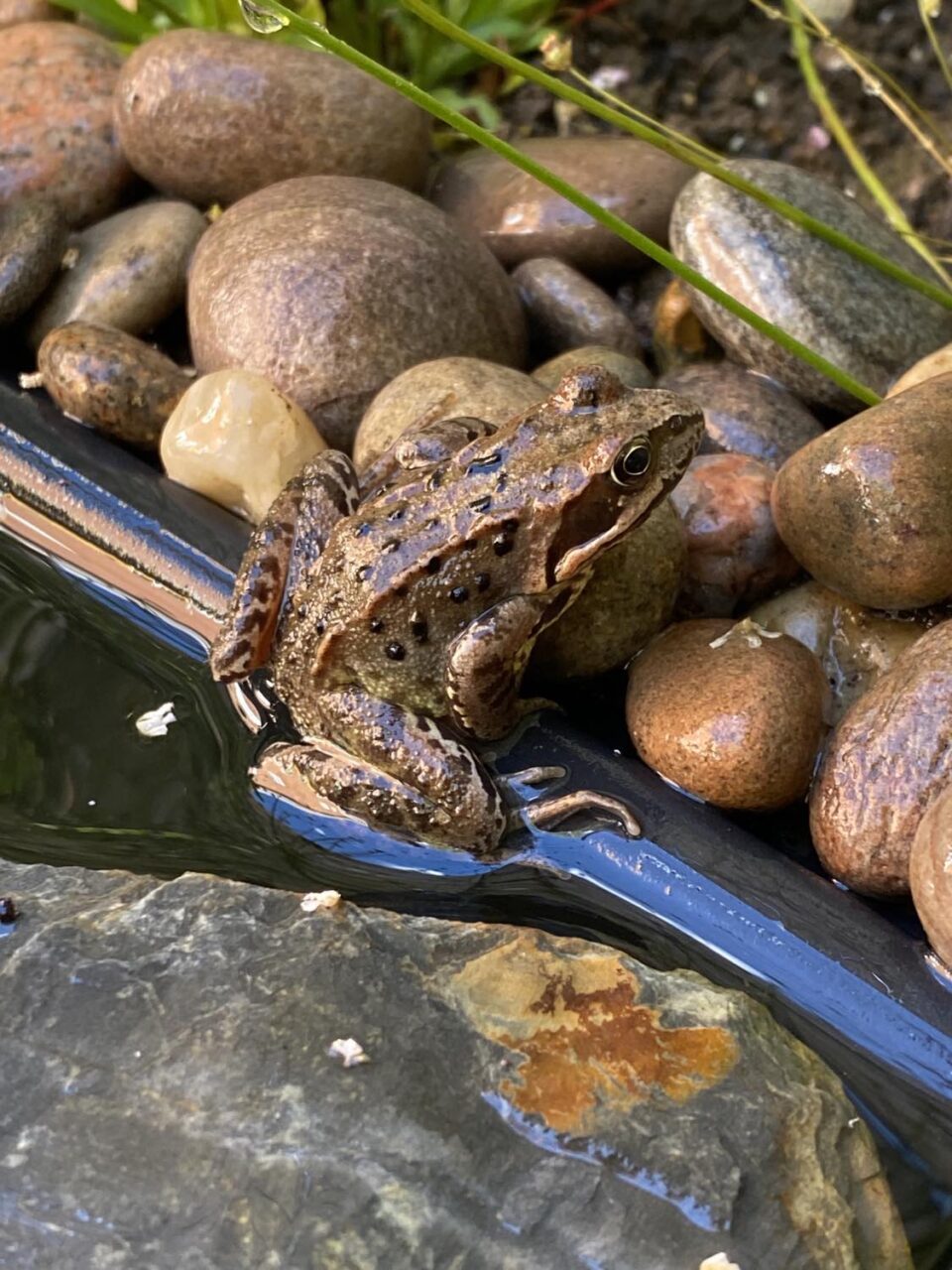
How To Build a Simple Wildlife Pond

If like me, you want to attract a little more wildlife to your garden then one of the best ways of achieving this is by adding a little bit of water. With our climate warming, it is now essential that we all try to provide a habitat for amphibians and water-loving insects, a place for many species to cool off and hydrate and a wildlife pond is the perfect way of ticking all of these off. We built a really simple wildlife pond last year and it is now in constant use by insects, frogs, birds and a hedgehog. Here’s how you can build your own…
What You Will Need To Build Your Wildlife Pond:
- Spade
- Tub or planter
- Rocks/wood/logs
- Pond plants
- Stones for edging
- Surrounding plants
- Water! (preferably rainwater)
How To Build Your Wildlife Pond:
Step 1 – Location
Choose a spot in your garden that gets a good amount of sunlight and partial shade during the day. This is perfect for attracting insects such as dragonflies and will prevent your pond from overheating. Now you can set your tub or planter down to check your positioning and size. Once you are happy begin clearing the area and digging.

We chose an area that sits near to a tree that isn’t in full sun all day.
Step 2 – Planter Placement
Once you have your hole dug out, set your planter into this and fill in with soil around the edges to secure it. You could also add soil or sand plus stones inside the base to create a natural pond environment.
Step 3 – Add Escape Routes
Now that your new pond is secure you can begin to add rocks, stones and/or wood that will provide escape routes if any animals such as hedgehogs fall in as well as hiding places for those creatures who may come to live in your pond. Once you are happy, begin to fill your pond, preferably with rainwater leaving a bit of space from the top for any further additions such as pond plants.

Step 4 – Pond Plants
All ponds will require plants for oxygenation and to provide habitats for water creatures. Your local garden centre will hopefully have a good choice and staff on hand to give advice. How many you need will depend on the size of your wildlife pond so make sure you have this information to provide.
Place your chosen pond plants around your planter until you find the look you prefer. Some may need to sit higher up than others so you can use rocks to achieve this.
Step 5 – Finishing Edge
To disguise the planter’s rim you can either use stones or bark around the top of the pond. These will not only look natural and attractive but they will also provide another habitat for bugs and insects as well as a great spot to just chill…

Step 6 – Planting
Now that your wildlife pond is complete all that is left to do is add plants and flowers to the surrounding area. Some great options would be Hostas, Ferns, Herbs and alpine perennials. You could also place some logs nearby to provide shelter for frogs or toads and homes for insects.

Step 7 – Enjoy
Sit back and watch as the wildlife begins to move in!

Having a wildlife pond will provide a wonderful habitat for many aquatic species, it will be a water source for garden visitors such as hedgehogs and birds and will be a tranquil place for you to sit by and watch.
Another option for adding water to your garden is a larger planter pond like this one we made in 2021.

If you enjoyed this post you can follow more of our life, opinions and antics over on Facebook, Twitter, YouTube and Instagram. Plus feel free to come and join in with my parenting group ‘From One Parent to Another’ on Facebook.
If you’d like to contact me you can either leave me a comment or drop me a line via my contact me page.
For other topics similar to this one check out these suggestions below…




